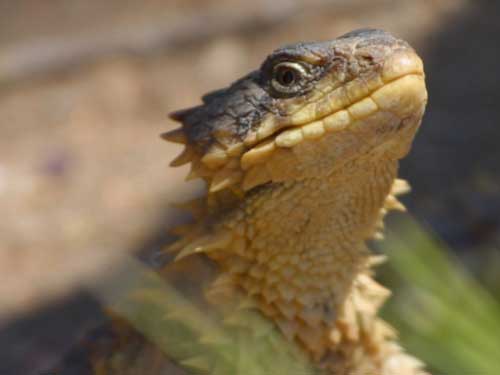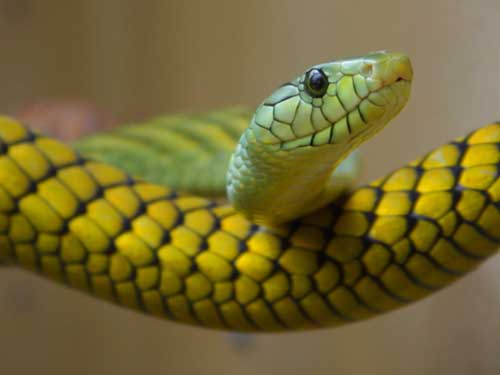 |
 |
All About Reptiles |
||||||||||||||||||||||||||||||||||||||||||||||||||
|
Reptiles are tetrapods, and also are amniotes, animals whose embryos are surrounded by an amniotic membrane. Today they are represented by four surviving orders:
Reptiles are found on every continent except for Antarctica, although their main distribution comprises the tropics and subtropics. Though all cellular metabolism produces some heat, modern species of reptiles do not generate enough to maintain a constant body temperature and are thus referred to as "cold-blooded", though this term has fallen out of favor. (See the Leatherback Sea Turtle for an exception: a reptile that elevates its body temperature well above that of its surroundings.) Instead they rely on gathering and losing heat from the environment to regulate their internal temperature, e.g, by moving between sun and shade, or by preferential circulation — moving warmed blood into the body core, while pushing cool blood to the periphery. In their natural habitats, most species are adept at this, and can maintain core body temperatures within a fairly narrow range, comparable to that of mammals and birds, the two surviving groups of "warm-blooded" animals. While this lack of adequate internal heating imposes costs relative to temperature regulation through behavior, it also provides a large benefit by allowing reptiles to survive on much less food than comparably-sized mammals and birds, who burn much of their food for warmth. While warm-blooded animals move faster in general, an attacking lizard, snake or crocodile moves very quickly. Most reptile species are oviparous (egg-laying). Many species of squamates, however, are capable of giving live birth. This is achieved, either through ovoviviparity (egg retention), or viviparity (babies born without use of calcified eggs). Many of the viviparous species feed their fetuses through various forms of placenta, just like mammals. They often provide considerable initial care for their hatchlings.
Several thousand fossil species showing a clear smooth transition from the ancestors of reptiles to present-day reptiles exist. Hylonomus is the oldest-known reptile, and was about 8 to 12 inches (20 to 30 cm) long. Westlothiana has been suggested as the oldest reptile, but is for the moment considered to be more related to amphibians than amniotes. Petrolacosaurus, Araeoscelis, Paleothyris, Hylonomus, Ophiacodontidae, Archaeothyris, mesosaurs and Ophiacodon are other examples. The first true "reptile" or Amniotes are categorized as Anapsids, having a solid skull with holes only for nose, eyes, spinal cord, etc. Turtles are believed by some to be surviving Anapsids, as they also share this skull structure; but this point has become contentious lately, with some arguing that turtles reverted to this primitive state in order to improve their armor. Both sides have strong evidence, and the conflict has yet to be resolved. Shortly after the first reptiles, two branches split off, one leading to the Anapsids, which did not develop holes in their skulls. The other group, Diapsida, possessed a pair of holes in their skulls behind the eyes, along with a second pair located higher on the skull. The Diapsida split yet again into two lineages, the lepidosaurs (which contain modern snakes, lizards and tuataras, as well as (in debate) the extinct sea reptiles of the Mesozoic) and the archosaurs (modernly represented by only crocodiles and birds, but containing pterosaurs and dinosaurs). The earliest, solid-skulled amniotes also gave rise to a seperate line, the Synapsida. Synapsids developed a pair of holes in their skulls behind the eyes (similar to the diapsids), which were used to both lighten the skull and increase the space for jaw muscles. The synapsids eventually evolved into mammals, and are often refered to as mammal-like reptiles, though they are not true members of the class Sauropsida.
|
|||||||||||||||||||||||||||||||||||||||||||||||||
All text is available under the terms of the GNU Free Documentation License





